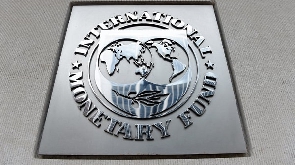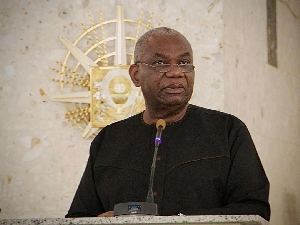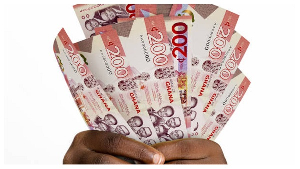Last week, the latest Fiscal Monitor report from the International Monetary Fund, dated April 2021, generated headlines across Ghana for one reason – it put Ghana’s fiscal deficit for 2020 at 16.0 percent which is considerably higher than the 11.7 percent claimed by the Government of Ghana.
This generated accusations against the government, unsurprisingly led by the political opposition, of providing false performance data to undeservedly improve its reputation as an economic manager.
But while public attention focused almost entirely on this, reportage of the IMF’s latest forecasts for Ghana largely failed to cover the other aspects of the macroeconomic assessment, including the Fund’s forecasts for the national economy which were provided for both 2021 and 2022.
Compared against the averages for sub-Saharan Africa as a whole, the IMF ‘s forecasts for Ghana illustrate a sense of optimism in the Bretton Woods institution’s Washington headquarters for the country’s immediate prospects going forward. Ghana’s economy is expected to grow faster than sub–Saharan Africa’s as whole and the country’s per capita income – which is average income per person – is forecast to grow faster than SSA’s as well. Just as importantly Ghana is expected to have a positive trade balance while SSA as a whole is expected to churn up a trade deficit.
On the downside though, Ghana’s public debt as a proportion of Gross Domestic Growth is expected to be substantially higher than SSA’s ratio, a situation that results in part from Ghana’s public revenues as a proportion of GDP being lower than that for SSA as a whole while the nation’s expenditure as a percentage of GDP being higher than that for the whole continent. Encouragingly, Ghana’s exports as a proportion of GDP are forecast to better those for SSA as a whole, but so will its imports be too.
But first, the issue of the fiscal deficit which has left government’s critics feeling justified but virtually everyone else confused as to why there is such a large difference between government’s computations and those of the IMF.
The actual reason for the difference however is something that has been dragging on since 2017; the way government accounts for both the energy sector legacy debts it is grappling with and the cost of the financial sector reforms it has (correctly) chosen to implement.
For both categories, government argues that the costs involved are not part of its normal year-to-year fiscal activities and so should not be included in its fiscal balance computations, since they are effectively one-off items.
The IMF on the other hand points out that no matter how and why they have arisen and how temporary they are, while they exist they form part of the fiscal deficit.
Indeed, they have to be financed so excluding them from the fiscal deficit computations understated Ghana’s deficit financing needs, a situation which indeed has shown up recently, leading to a controversy of its own.
Furthermore, argue those who side with the IMF – and these include many politically non-partisan, but simply pragmatic financial economists – while government may have been justified in classifying energy debts and financial sector reform costs as one off items when they first appeared in public sector accounts, this is no longer the case as they have become multi-year expenses that are not about to vanish.
Indeed, the energy sector legacy debts are such that government has had to introduce yet another energy sector levy in the 2021 budget since they are rising rather than falling; and it has had to introduce a five percent levy on the banks as well to help meet the financial sector reform costs.
Although most of those costs have already been met (although regulators and receivers admit a last round of cash is needed to complete the refunds to depositors and portfolio investors) and so are unlikely to keep rising as they have done since 2017, the cost of servicing the debts already incurred will continue to add to government’s financing gap until the underlying principle amounts are paid off.
Interestingly however government includes both the legacy energy debts and the financial freeform debts in its public debt computations which means it and the IMF are on the same page with regards to the size of the public debt and its ratio to GDP.
Actually, while the IMF’s stance appears more pragmatic (some will uncharitably put it as more honest), government’s stance is more in Ghana’s interest. Its effort to lower the stated fiscal deficit not only seeks to make its macroeconomic management performance record look better; in also seeks to present a fiscal situation that can attract new financing and refinancing of maturing old debt, on better terms than if the energy debts and financial sector reform costs were added to the fiscal deficit figures.
However the differences between government’s fiscal deficit computations and those of the IMF look set to continue into the future as there is no agreement between both sides. Consequently while government has announced a fiscal deficit target of 9,5 percent for 2021, the IMF projects it at 12.6 percent, before it falls to 10.4 percent in 2022.
That is as far ahead the Fund’s forecasts go , but obviously, going by its projections, government would not achieve its target of bringing the fiscal deficit back under the five percent ceiling set by the currently suspended fiscal responsibility law, by 2024,
But on the upside, Ghana is by no means alone in its fiscal deficit challenges. Even the IMF’s computations put Ghana better off than SSA as a whole. The IMF puts SSA’s fiscal deficit at 16.3 percent for 2020, at 12.9 percent for 2021 and at 10.6 percent for 2022.
Ghana is also expected to do better than SSA as a whole with regards to economic growth as well over the next two years although the Fund reckons that it lags behind the continental average last year, posting a 0.9 percent growth rate, which was bettered by SSA‘s 1.9 percent.
But the IMF forecasts 4,6 percent growth for 2021 and although this is 400 basis points less than the government’s own target of 5.0 percent, it clearly outstrips the Fund’s projection of 3.4 percent for all of SSA. The Fund expects that gap to expand further in 2022 with Ghana achieving 6.1 percent growth – thus restoring its pre-COVID 19 – while SSA as a whole trundles along at 4.6 percent.
Importantly the IMF expects the non-oil sector to drive Ghana’s growth this year, achieving 6.2 percent growth which would be much better than SSA’s 3.6 percent. However, it expects Ghana’s oil and non-oil sectors to contribute almost equal growth rates in 2022 with the on-oil sector growing by 5.8 percent, marginally slower than the overall growth rate 6.1 percent, and nearly one and a half times SSA’s projected non-oil growth rate of 4.0 percent.
This is expected to result in better average incomes for the citizenry. The IMF forecasts that real per capita income in Ghana will grow by 3.0 percent this year after falling by 1.1 percent last year.
This compares favourably with a 4.2 percent fall for SSA in 2020 and just 1.1 percent growth in 2021. The Fund further reckons that Ghana’s per capita income will rise by 3.5 percent in 2022, more than double SSA’s 1.6 percent growth.
But with regards to inflation, the IMF predicts a reversal of positions. While Ghana’s end of year inflation for 2020 of 10.5 percent was lower than the average for all of SSA at 11.1 percent, the IMF expects Ghana’s inflation rate to be 9.8 percent by the end of this year, above SSA’s 8.7 percent; and although it is projected to fall to 7.5 percent by the end of 2022, this would still be marginally higher than the 7.3 percent the Fund expects for SSA.
The most worrying aspect of the IMF’s forecasts for Ghana is that relating to the public debt. The Fund expects Ghana’s public debt to GDP ratio (which it puts at 78.0 percent by end of 2020, well above SSA’s 57.8 percent) to rise to 81.5 percent this year and further to 83.2 percent next year. Instructively it however expects this ration of SSA as a whole to stabilize at 56.2 percent this year at for 2022, implying that while the continent in general is getting to grips with its sovereign indebtedness, Ghana is not.
This is in part because Ghana’s public revenues are lower than those of SSA a whole while its expenditures are higher. In 2020 Ghana’s revenues as a proportion of GDP were 12.0 percent, well below the 15.1 percent posted by SSA as a whole.
The situation is not envisaged to change much; Ghana is expected to increase its ratio to 12.8 percent this year and 13.8 percent in 2022 but these are still well below the 15.5 percent for 2021 and 15.6 percent for next year foreseen by the Fund for SSA as a whole.
Conversely though, according to the IMF, in 2020 Ghana’s public spending as a proportion of GDP was 28.3 percent, well above the 22.8 percent recorded for SSA as a whole. This situation too is not expected to change. The Fund sees Ghana’s ratio rising to 28.7 percent this year before falling to 24.4 percent next year; in both cases higher than SSA’s 21.7 percent for 2021 and 20.8 percent for 2022.
However, the IMF paints a much prettier picture with regards to Ghana’s foreign trade. Ghana is projected to deliver consistent trade surplus’s of 2.2 percent of GDP in 2021 and 1.6 percent in 2022 while SSDA as a whole makes trade deficits of 0.6 percent this year and 1.0 percent next year.
All these are projections which often turn out wrong but the IMF has a better record than most with regards to macroeconomic projections because of its access to accurate up to date data and the sheer quality of its econometric modeling.
Interestingly, the projections reveal that Ghana has better economic prospects going forward than SSA as a whole, with the exception of its fiscal deficit and the effect of that on its already dire public debt situation. Little wonder then that the international investment community are still willing to buy up Ghana’s bonds, albeit at a rising cost as their perceptions of the associated risk changes for the worse.
But while this may look good for Ghana naysayers may have a point when they assert that all this data simply means that Ghana is in as much trouble as the rest of the continent – lots of trouble.
Business News of Monday, 19 April 2021
Source: goldstreetbusiness.com

















